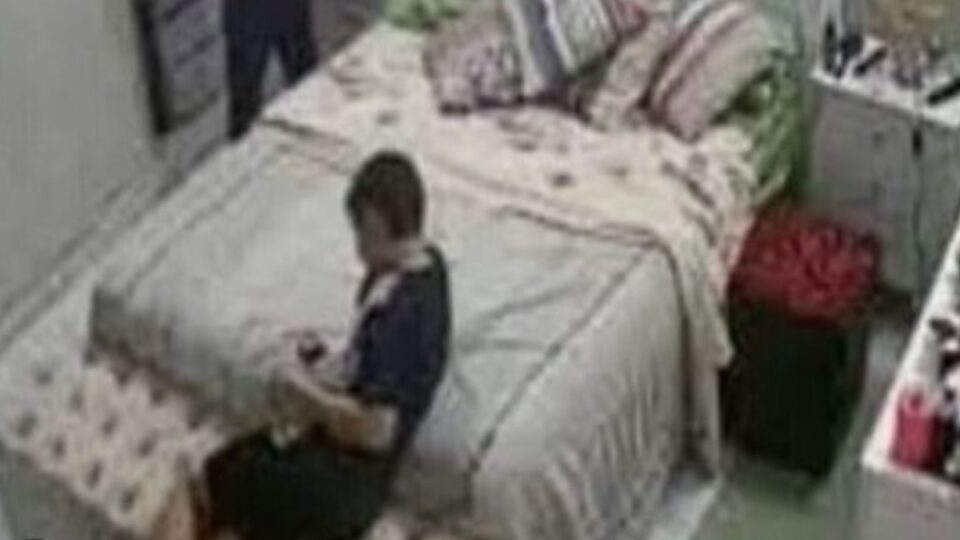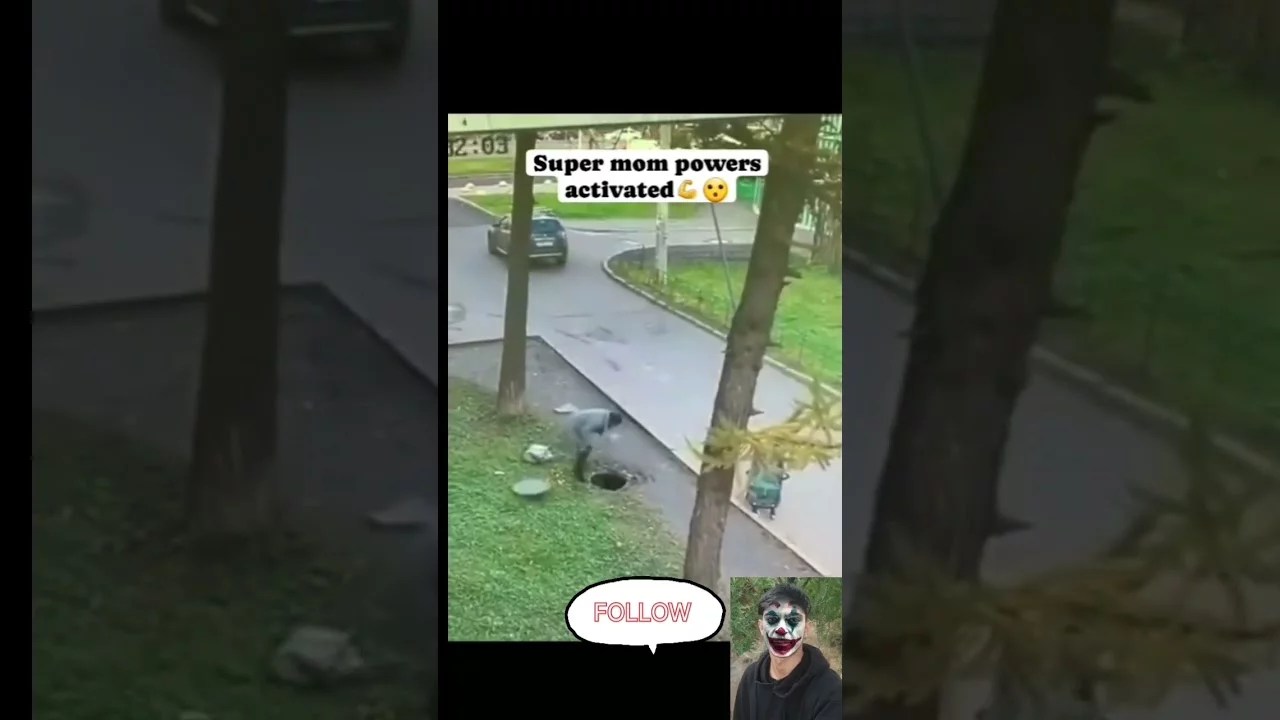Unveiling a crucial piece of evidence: A comprehensive analysis of a specific CCTV recording. This footage presents a vital opportunity for understanding a critical incident.
The recording, likely captured by closed-circuit television (CCTV) cameras, depicts a child and their parent. The video may showcase details of their interaction, location, and activities. Crucially, the "original" designation implies the recording has not been altered or tampered with. This original state is vital for any investigation relying on its evidentiary value.
The significance of this video lies in its potential to shed light on a range of circumstances, including resolving a missing person case, or aiding in understanding events surrounding an injury, crime, or incident. It can serve as crucial evidence in legal proceedings, supporting or challenging claims, and reconstructing events. The existence of an original video, free from manipulation, guarantees the reliability of information gleaned from its analysis. This factual accuracy underpins any subsequent investigations, interrogations, or legal interpretations.
Further analysis of the video's content may reveal critical details such as time stamps, precise locations, identifying characteristics of individuals, and potentially, critical actions or events. This information will be crucial in understanding the context of the situation.
CCTV Footage
Analysis of a CCTV video recording of a child and their mother offers crucial insights. The integrity of the original footage is paramount for accurate interpretation and potential legal implications.
- Original Recording
- Time Stamping
- Location Data
- Visual Evidence
- Audio Recording (if present)
- Eyewitness Accounts (if available)
The "original" aspect ensures the video's unaltered state. Precise time stamping pinpoints events, while location data provides context. Visual evidence captures actions, and audio provides further details. Coupled with potential eyewitness testimony, this comprehensive dataset is crucial in establishing the facts surrounding a potential incident. For example, if a child is reported missing, this evidence could prove vital. The video may reveal the child's movements, location, and interactions, offering vital pieces in a reconstruction of events.
1. Original Recording
The term "original recording" in the context of a CCTV videospecifically, one depicting a child and their motheris crucial. An original recording is unaltered footage, free from manipulation or subsequent edits. This unadulterated nature is vital because it ensures the integrity of the evidence. Without this guarantee of authenticity, any subsequent analysis, investigation, or legal proceedings based on the video are significantly compromised. An altered recording could be misleading, potentially obscuring or misrepresenting crucial details of the situation.
Consider a scenario where a child goes missing. An original CCTV recording showing the child and their mother shortly before the reported disappearance holds immense evidentiary value. Key details such as the child's location, their demeanor, and any interactions with their mother can be crucial in piecing together the events leading to the child's disappearance. If this recording has been altered, critical information could be lost, potentially hindering the search and investigation. Similarly, in cases of alleged abuse or neglect, an original recording can be definitive proof, illustrating the actions and interactions between the child and their caregiver. Tampering with the original recording would seriously undermine any effort to ascertain the truth.
In summary, the "original recording" concept is fundamental to the reliability of CCTV footage involving a child and their mother. Authenticity is essential to the legal and investigative processes. Maintaining the original integrity of such recordings ensures that crucial information is not lost or manipulated, allowing for an accurate representation of events and fostering trust in the investigative process. The potential for manipulation and the importance of maintaining the unadulterated nature of an original recording should be carefully considered in every case to uphold the integrity of evidence.
2. Time Stamping
Accurate time stamping within a CCTV recording of a child and their mother is critical. It establishes a chronological sequence of events, crucial for understanding the context and potential significance of those events. Precise time-stamping is vital for establishing the timeline of activities, particularly in situations involving missing persons or potential criminal activity.
- Establishing the Sequence of Events
Accurate time-stamps allow for a detailed reconstruction of events. This is crucial for identifying activities leading up to, during, and after a particular incident, helping investigators understand the overall sequence and identify key moments. For example, in a missing child case, the time a child is last seen on camera and the time they were reported missing helps narrow the search parameters. If the video only shows the child at 14:30 and the missing person report is at 15:00, this timestamp gives a valuable window into the potential timeframe of the childs disappearance.
- Precise Location Determination
Time-stamped locations within the video allow investigators to connect the child and their mother to specific areas. A clear time-stamp paired with precise location data could indicate the child's and mother's movements through a building, a park, or a specific street corner, adding invaluable context to the investigation. This is especially important in determining potential routes or patterns of behavior.
- Correlation with Other Evidence
Time-stamps facilitate the correlation of the CCTV recording with other evidence. This includes witness statements, security logs, or other CCTV recordings. If a witness claims to see the child and their mother at a specific time, the time-stamp from the CCTV recording allows investigators to verify the accuracy and consistency of the witness report and match it with the timeline of activities.
- Assessing the Validity of Statements
The ability to align CCTV footage with specific moments and times enables a more accurate assessment of the statements made by individuals related to the event. For example, if someone claims they saw the child and their mother at a particular time, the video can confirm or refute their statement. This directly impacts the accuracy of the larger investigative process.
In conclusion, accurate time-stamping is essential in any investigation involving CCTV footage. Without accurate time-stamps, the video loses much of its evidentiary value, making it challenging to piece together the sequence of events, correlate data with other evidence, and assess the validity of other statements. Thus, time-stamps in an original CCTV recording of a child and their mother are not just supplemental information; they are fundamental to the investigation process.
3. Location Data
Location data, when integrated with an original CCTV recording of a child and their mother, significantly enhances the investigative process. The precise location depicted in the footage is crucial for several reasons. First, it provides context to the events occurring in the video. Knowing the location allows investigators to establish a clear understanding of the surroundings, potentially identifying key details like potential entry or exit points, areas of interaction, and relevant landmarks. This detailed context is paramount for developing a comprehensive timeline of events and for assessing potential narratives.
For instance, if a child is reported missing, location data from the CCTV recording can pinpoint where the child and their mother were last seen together. This information might lead investigators to particular areas to search or interview witnesses. If the video shows the child and mother in a specific park, investigators can focus their search in that area or interview individuals present in the park around the time of the recorded interaction. Accurate location data facilitates targeted investigations, saving valuable time and resources compared to a less focused approach. Moreover, discrepancies between location data and other accounts can highlight inconsistencies that require further investigation.
The importance of precise location data cannot be overstated. The accuracy and reliability of the location information are critical for the validity of the entire investigation. In legal proceedings, the precise geographical coordinates or descriptions depicted in the CCTV recording can be instrumental in corroborating or challenging witness statements or accounts. Furthermore, for investigations involving a missing child, the precise location of interactions between the child and their mother can aid in the development of more effective strategies, potentially leading to a successful recovery. Careful analysis of the location data, combined with other information gleaned from the video, significantly improves the chances of a successful outcome in such a case.
4. Visual Evidence
Visual evidence within an original CCTV recording of a child and their mother is paramount. The visual details captured by the cameras are crucial for understanding the interaction and context of the event. Visual evidence encompasses not only the physical actions of the individuals but also the environment. This evidence allows for an analysis of body language, expressions, and interactions. These elements provide critical insights, potentially identifying key moments in a sequence of events, and can be fundamental for accurate reconstruction.
Consider a case where a child is reported missing. The visual evidence might show the child and their mother entering a specific area. This visual detail, combined with time stamps and location data, can narrow down the search parameters. Similarly, in cases of alleged abuse or neglect, visual recordings can be instrumental in identifying physical signs or patterns of behavior. The original footages integrity is critical. Any alterations or manipulations to the visual evidence could obscure critical details, potentially misleading investigations and influencing legal decisions. If the child is exhibiting unusual behavior or distress, the video could offer crucial visual indicators. The actions and expressions of the child and their mother can communicate important information about their emotional state and potential underlying issues. Specific clothing, accessories, or the condition of the child's attire could also be crucial evidence.
In conclusion, visual evidence from an original CCTV recording is indispensable. This data offers a unique and detailed perspective of an event, allowing for a meticulous reconstruction. Its unmanipulated nature ensures the integrity of the evidence, vital for accurate investigations and legal proceedings. The potential for detailed insights into behavior, interactions, and contextual details underscores the importance of careful observation and analysis of visual recordings within the investigation process.
5. Audio Recording (if present)
An audio recording accompanying a CCTV video of a child and their mother significantly enhances the evidentiary value, especially when considering the "original" recording. Audio provides crucial contextual information, often supplementing visual evidence and corroborating or contradicting statements. The presence of an original audio component is essential for maintaining the integrity of the recording and the potential insights it may offer.
Consider a scenario where a child is reported missing. A clear audio recording capturing the child's voice, or their mother's distress, can be pivotal. If the child's voice, for example, expresses fear or distress, it offers a valuable independent confirmation of potential risk. Conversely, if an audio component reveals an amicable conversation between the child and their mother, it might negate certain concerns or establish a different narrative. In cases of alleged abuse or neglect, the audio recording could provide auditory evidence of harsh words, emotional outbursts, or even physical altercation sounds, offering further corroboration of alleged mistreatment. Moreover, the presence of ambient sounds like street noise, background music, or other sounds associated with a particular location provide critical context, helping to verify the location and approximate time of events.
The presence and quality of the original audio recording can be essential for legal proceedings. It allows for a more comprehensive understanding of the events captured. However, it is crucial to acknowledge that a lack of audio does not diminish the value of the visual evidence if the recording is genuine and unaltered. If the audio recording is tampered with or missing, its absence should be noted, potentially raising concerns about the integrity of the entire recording. In the context of establishing reliability, the audio recording's authenticity, like the visual components, is vital. A complete lack of audio might necessitate further investigation, particularly if other circumstances suggest its presence was expected or plausible given the situation.
6. Eyewitness Accounts (if available)
Eyewitness accounts, when available, play a critical role in conjunction with original CCTV footage of a child and their mother. These accounts offer valuable corroboration or contradiction of the visual and potential audio details captured by the cameras. Their accuracy and reliability are essential factors in assessing the overall narrative and context of the situation.
For example, if a witness reports seeing the child and their mother at a particular location and time, this account can be compared to the timestamped CCTV footage. If the video aligns with the eyewitness description, it strengthens the reliability of the account. Conversely, discrepancies between the account and the video highlight potential errors or intentional misrepresentations. Consider a case where the video shows the child and mother leaving a building at 14:30, but a witness claims to have seen them at 14:45 at a different location. This discrepancy necessitates further investigation to determine the source of the difference. Such discrepancies might indicate a need for additional witness statements or an analysis of the circumstances of the witness's observation. In a situation involving a missing child, eyewitness accounts can provide essential pieces of information to reconstruct events surrounding the childs disappearance. The consistency of the accounts, when compared to the video data, directly impacts the accuracy of the investigation.
The value of eyewitness accounts significantly increases when considered alongside original CCTV footage. They can provide context beyond the immediate visual details captured by the camera, including information about the emotional state of individuals or environmental factors impacting events. Furthermore, eyewitness accounts can corroborate or challenge the information provided by the video. For instance, an account emphasizing a child's unusual behaviour might be corroborated by a more complete visual recording of unusual or problematic behavior. The integration of these distinct sources of information strengthens the completeness and accuracy of the investigation. However, the reliability of eyewitness accounts must be carefully evaluated. Factors such as the witness's relationship to the individuals involved, their position during observations, and potential biases need careful consideration. Consequently, careful scrutiny of the eyewitness accounts is equally as vital as scrutinizing the CCTV footage, ensuring the investigation utilizes all available information effectively and responsibly.
Frequently Asked Questions
This section addresses common inquiries regarding the analysis of CCTV footage, specifically focusing on recordings depicting a child and their parent. Understanding these aspects is crucial for ensuring a robust and accurate investigative process.
Question 1: What is the significance of the "original" CCTV recording?
An "original" recording refers to unedited, unaltered footage. Its integrity is paramount. Any alterations to the video could compromise the accuracy of events, potentially obscuring key details or manipulating the representation of the situation. This lack of authenticity hinders the reliability of the information and compromises the entire investigation.
Question 2: How does time-stamping contribute to the analysis?
Accurate time-stamps within the video provide a chronological sequence of events. This allows investigators to establish a precise timeline, identifying key moments and correlating those moments with other potential evidence or witness accounts. Time-stamps are crucial for understanding the sequence of actions and relationships between different events.
Question 3: What role does location data play in interpreting the footage?
Location data, precisely pinpointing the location where the video was recorded, provides essential context. Knowing the exact location helps investigators determine the relevance of the events occurring there, identify potential points of entry or exit, and relate the footage to other locations mentioned in the investigation. This information is critical for establishing timelines and potential routes.
Question 4: How can visual evidence support the investigation?
Visual evidence encompasses details like body language, expressions, and actions. This visual information allows for a detailed reconstruction of events. Critical observations, such as a child's unusual demeanor or distinctive clothing, can provide important details. An unaltered, original recording is necessary for these observations to accurately convey their meaning.
Question 5: Are audio recordings significant in analyzing the footage?
If present, audio recordings offer crucial contextual information. They can corroborate or challenge visual details and statements. For instance, if a witness claims to have heard a specific sound during an incident, an original audio recording helps determine the accuracy and importance of that claim.
Accurate analysis of CCTV footage relies on the integrity of the recording, the precision of timestamps, the accuracy of location data, the clarity of visual evidence, and the consideration of accompanying audio, if available. All of these factors contribute to a comprehensive understanding of the events depicted.
Further investigation often requires corroborating evidence from other sources. Eyewitness accounts and other physical evidence can enhance the investigation's overall effectiveness.
Conclusion
The analysis of a CCTV recording, specifically one depicting a child and their parent, underscores the critical importance of original, unaltered footage. The integrity of the recording is paramount, as alterations can significantly compromise the accuracy of subsequent investigations. Key elements, including precise time-stamping, accurate location data, comprehensive visual evidence, and any accompanying audio, contribute to a comprehensive understanding of events. These elements, when analyzed rigorously and interpreted responsibly, can provide invaluable insights, potentially proving crucial in legal proceedings or missing person investigations. The reliability of the recording is essential for ensuring a comprehensive and accurate reconstruction of events, directly impacting the potential for successful outcomes in investigations.
The meticulous examination of original CCTV footage featuring a child and their parent underlines the importance of careful scrutiny and adherence to established protocols in all investigations. A clear understanding of the limitations of video analysisparticularly when considering potential biases or external factors influencing the recordingis equally crucial. The integration of various evidence sources, including eyewitness accounts, corroborates or challenges the data from the CCTV footage. Ultimately, this thorough analysis promotes greater accuracy in reconstructing events, contributing to the pursuit of truth and justice in any legal or investigative context. Maintaining meticulous records and adherence to sound investigative practices are fundamental in upholding the integrity of the process.
Article Recommendations



ncG1vNJzZmibkafBprjMmqmknaSeu6h6zqueaKifrLKzecKorKmklah8o8HSnJirZZuesW6tzZ1koaGjYrqwuYycmq2uXau2pbHOZqaroZeeu6K4jaGrpqQ%3D